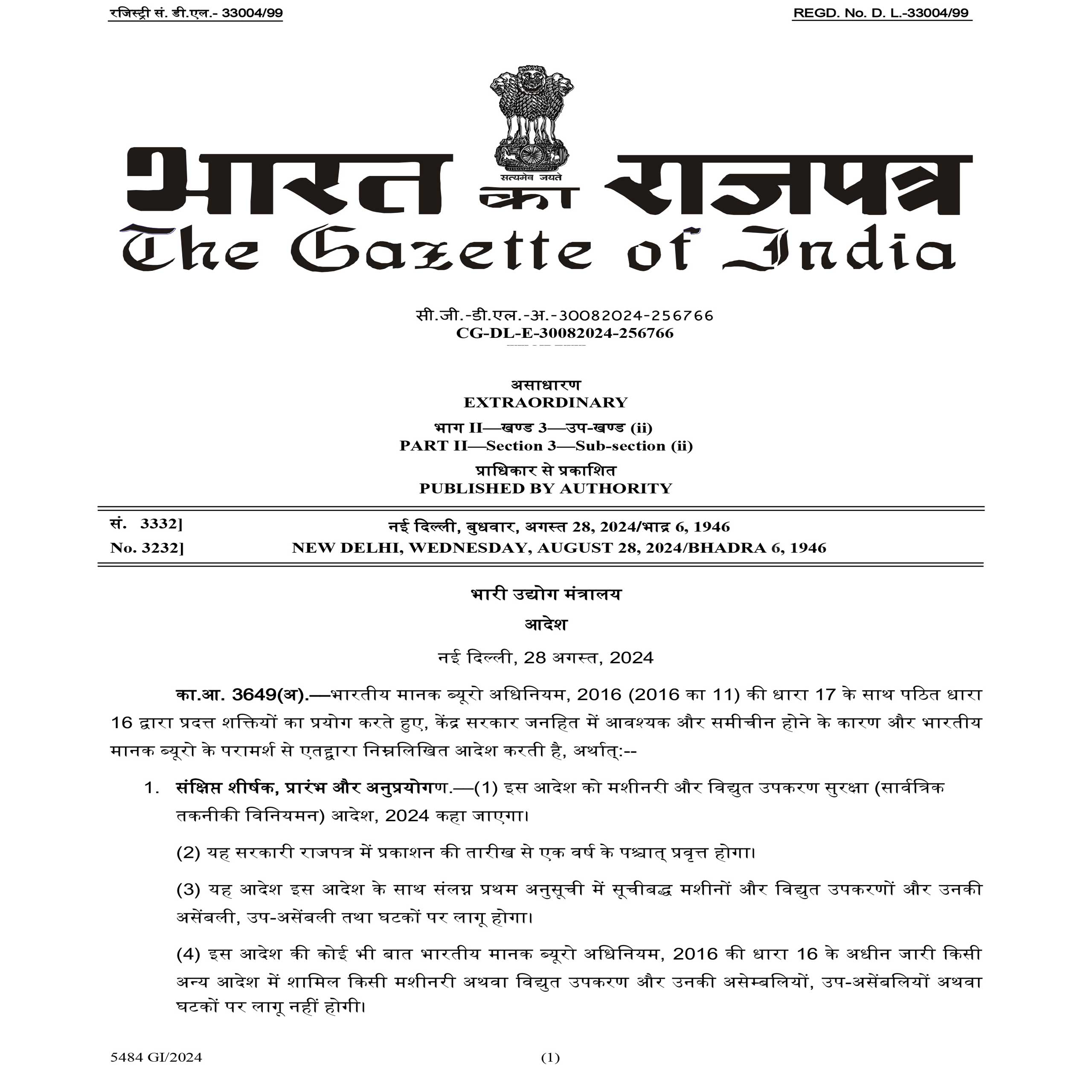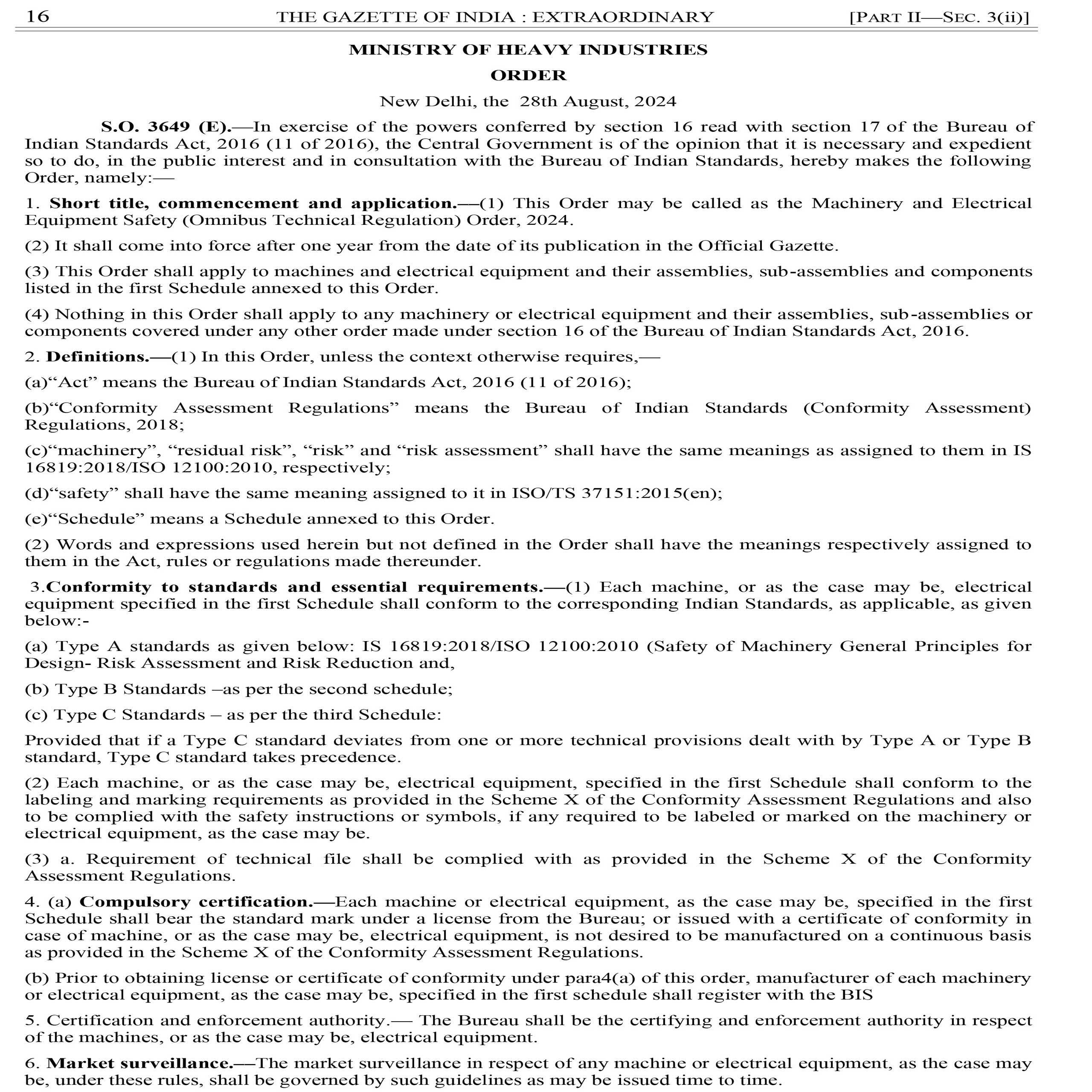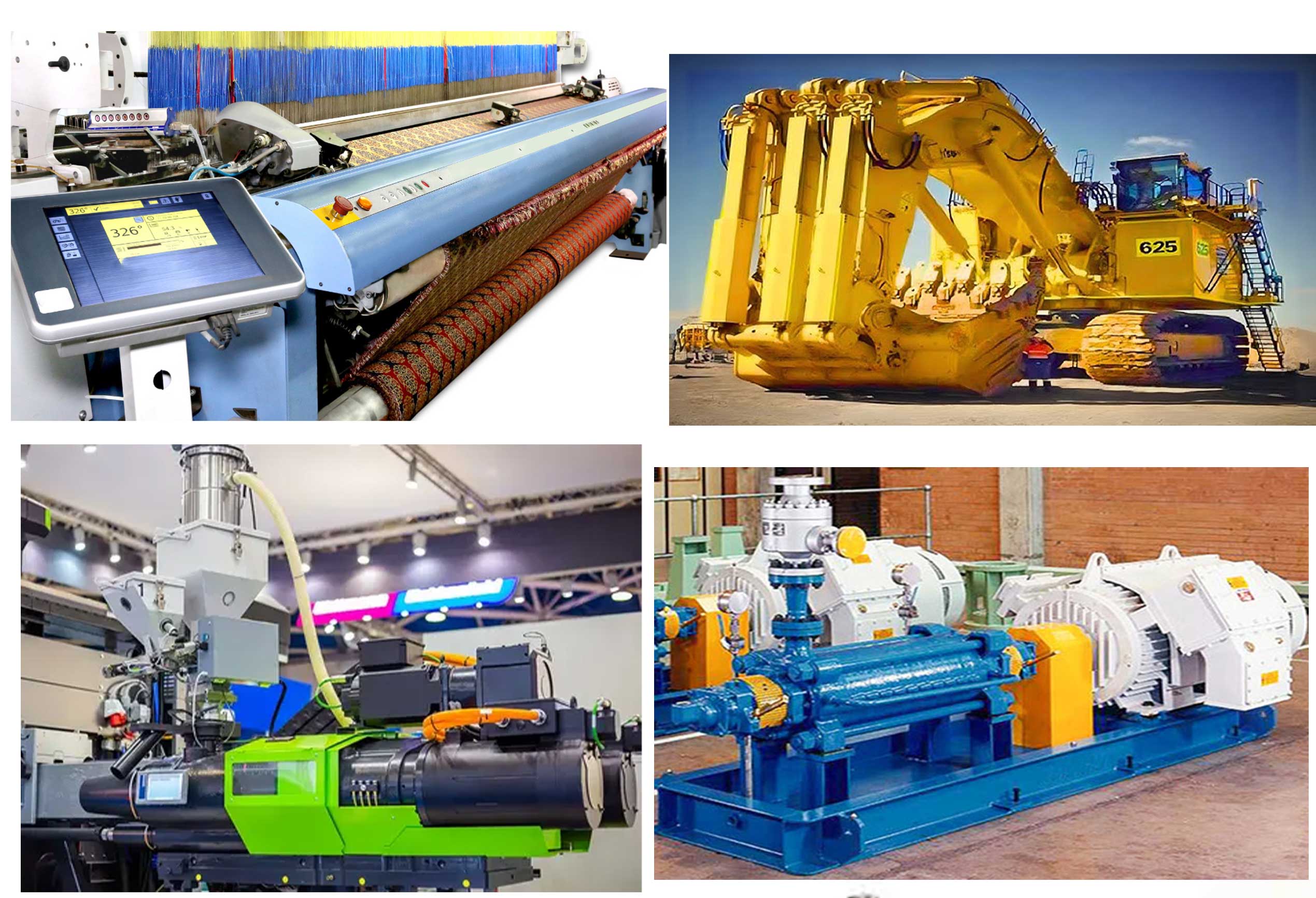UNDERSTANDING THE KEY ASPECTS OF SCHEME X OF BIS CONFORMITY ASSESSMENT: A COMPREHENSIVE GUIDE FOR CERTIFICATION OF SAFETY OF MACHINERY AND ELECTRICAL EQUIPMENT
INTRODUCTION
Scheme X, introduced under the Bureau of Indian Standards (BIS) Conformity Assessment Regulations, 2018, represents a significant development in the regulatory framework for product certification in India. It was further refined by the BIS Conformity Assessment (Amendment) Regulations, 2022. This article explores the essential elements of Scheme X, its application process, and its impact on manufacturers and consumers.
WHAT IS SCHEME X ?
Scheme X is a specialized conformity assessment scheme designed for products that require specific technical and safety standards. It allows manufacturers to obtain a BIS license or a certificate of conformity to use or apply the BIS Standard Mark on their products. The scheme covers a wide range of products, particularly those that require strict adherence to safety.
SCOPE OF SCHEME X
Scheme X is applicable to products that need to meet specific expectations or requirements as outlined in relevant Indian Standards. It differs from other schemes by offering the option for manufacturers to choose either a license for continuous production or a certificate of conformity for batch production. This flexibility is particularly useful for products that are not manufactured on a continuous basis but need to meet high-quality standards.
APPLICATION PROCESS UNDER SCHEME X
The process for obtaining a license or certificate under Scheme X involves several critical steps:
Online Application Submission: Manufacturers must submit their applications through the BIS Manak online portal. For new applicants, a dedicated module is under development, but applications can currently be processed through the Scheme I portal.
Selection of Indian Standard: Applicants must choose the relevant Indian Standard (IS) from a specified list when submitting their application.
Technical Documentation: A comprehensive technical file must be uploaded, detailing the product description, compliance with specified requirements, design, drawings, and quality assurance measures. This file is crucial for the desk evaluation and subsequent inspection by BIS.
Evaluation and Inspection: BIS conducts a thorough evaluation of the technical file and may perform on-site inspections at the manufacturing premises. The inspection ensures that the manufacturer has the necessary facilities and capabilities to produce the product in compliance with the applicable standards.
Grant of License or Certificate: Upon satisfactory evaluation and payment of fees, BIS grants the license or certificate, allowing the manufacturer to apply the BIS Standard Mark to the product.
Surveillance : BIS retains the right to conduct surveillance at any time during the license period to verify ongoing compliance with specified requirements



SCHEME – X TAILOR MADE FOR SAFETY OF MACHINERY AND ELECTRICAL EQUIPMENTS
- CONFORMITY TO STANDARDS AND ESSENTIAL REQUIREMENTS
Each machine, or as the case may be, electrical equipment specified in the first Schedule shall conform to the corresponding Indian Standards, as applicable, as given below:-
- Type A standards as given below:
IS 16819:2018/ISO 12100:2010 (Safety of Machinery General Principles for Design- Risk Assessment and Risk Reduction) and
(b) Type B Standards –as per the second schedule;
- Type C Standards – as per the third Schedule:
Provided that if a Type C standard deviates from one or more technical provisions dealt with by Type A or Type B standard, Type C standard takes precedence.
(2) Each machine, or as the case may be, electrical equipment, specified in the first Schedule shall conform to the labeling and marking requirements as provided in the Scheme X of the Conformity Assessment Regulations and also to be complied with the safety instructions or symbols, if any required to be labeled or marked on the machinery or electrical equipment, as the case may be.
(3) Requirement of technical file shall be complied with as provided in the Scheme X of the Conformity Assessment Regulations.
- Compulsory certification.––Each machine or electrical equipment, as the case may be, specified in the first Schedule shall bear the standard mark under a license from the Bureau; or issued with a certificate of conformity in case of machine, or as the case may be, electrical equipment, is not desired to be manufactured on a continuous basis as provided in the Scheme X of the Conformity Assessment Regulations.
- Certification and enforcement authority.–– The Bureau shall be the certifying and enforcement authority in respect of the machines, or as the case may be, electrical equipment.
Scope and Applicability:
The domain where this QCO is applicable is reproduced below:
- All types of Pumps for handling liquids, liquid elevators and (or)their assemblies /sub-assemblies /components
- All types of compressors and (or) their assemblies/sub-assemblies /components.
- All types of machinery for treatment of material by a process involving a change of temperature and(or)their assemblies /sub-assemblies /components
- All types of centrifuges, filtering or purifying machinery for liquid and gas and(or)their assemblies /sub-assemblies/components
- All types of machinery for filling, closing, sealing, labelling bottles, packing or wrapping and(or)their assemblies/subassemblies /components
- All types of cranes and (or) their assemblies/sub-assemblies/components
- All types of machinery for construction, earthmoving, Mining and (or)their assemblies /subassemblies/components
- All types of weaving machines (looms) and (or) their assemblies/ sub-assemblies / components.
- All types of machinery for making embroidery and (or) their assemblies /sub-assemblies /components.
- All types of metal cutting machines tools covered under the heading and (or) their assemblies/sub-assemblies/components.
- All types of machine tools for working stone, ceramics, concrete, asbestos cement or like mineral glass and (or)their assemblies /subassemblies/components.
- All types of machinery for working rubber and plastics and(or) their assemblies /sub-assemblies /components
- All types of Machines including the machines for public works & building and the machinery & mechanical appliances having individual functions, not specified Or included elsewhere in Chapter 84 and(or)their assemblies/subassemblies /components
- All types of gears and gearing, toothed wheels, chain sprocket, transmission elements ball or roller screws, gear boxes and speed changers, including torque converters And (or)their assemblies /sub-assemblies /components.
- All types of Rotary electrical machines such as Generator, etc. and (or) their assemblies /sub-assemblies /components.
- All types of Diesel Generator and (or) their assemblies /sub-assemblies /components.
- All types of Transformers and (or) their assemblies /sub-assemblies /components.
- All types of Power Semiconductor Converter and (or) their assemblies /sub-assemblies /components.
- All types of switch gear and control gear equipment operating at voltages not exceeding 1000 volts and (or)their assemblies /sub-assemblies /components.
- All types of switch gear and control gear equipment operating at voltages exceeding 1000 volts and (or) their assemblies /sub-assemblies /components.


FEE STRUCTURE
To facilitate the certification process, manufacturers must adhere to the following fee structure:
Application fee for grant of licence: ₹2,000
Application fee for grant of certificate of conformity: ₹2,000
Certification fee for grant of licence or renewal of licence: ₹25,000 per year
Certification fee for grant of certificate of conformity: ₹10,000
Fee for review of technical file for grant of licence or certificate of conformity or
change in scope of licence: ₹20,000 per technical file
Inspection fees, including surveillance, for any site visit: ₹20,000 per man-day
Sample procurement charges: On actuals
Testing Charges: On actuals
Note 1: All fees must be paid in advance.
Note 2: Manufacturers situated outside the territory of India shall bear all expenses, including the cost to the Bureau of the days spent by its certification officer(s) during inspection, audit, or evaluation at the manufacturing facility, testing laboratory, or any other premises (from the time of departure from the place of posting till return thereto) and testing fee as decided by the Bureau.
CONCLUSION
Scheme X under the BIS Conformity Assessment Regulations represents a robust framework for ensuring product quality and safety in India. By providing a structured process for obtaining certification, it helps manufacturers meet the stringent requirements of Indian Standards while offering flexibility in production. For consumers, Scheme X provides assurance that the products they use meet the highest standards of quality and safety.
FINAL THOUGHTS
As Scheme X continues to evolve, it will play a crucial role in enhancing the credibility of Indian products in the global market. Manufacturers seeking to obtain BIS certification should
familiarize themselves with the scheme’s requirements and processes to ensure compliance and benefit from the opportunities it offers.
 For your Certification needs pls contact info@globalomega.com 011-41413939(100 lines)
For your Certification needs pls contact info@globalomega.com 011-41413939(100 lines)
908-909, Hemkunt House, Rajendra Place, New Delhi-110008, India

Leave a Reply